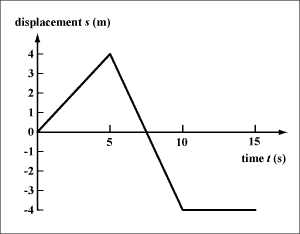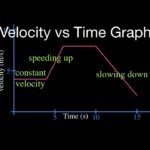The answers to these questions hinge on one’s ability to read a graph. Since the graph is a velocity-time graph, the velocity would be positive whenever the line lies in the positive region (above the x-axis) of the graph. Similarly, the velocity would be negative whenever the line lies in the negative region (below the x-axis) of the graph. As learned in Lesson 1, a positive velocity means the object is moving in the positive direction; and a negative velocity means the object is moving in the negative direction. So one knows an object is moving in the positive direction if the line is located in the positive region of the graph (whether it is sloping up or sloping down). And one knows that an object is moving in the negative direction if the line is located in the negative region of the graph (whether it is sloping up or sloping down). And finally, if a line crosses over the x-axis from the positive region to the negative region of the graph (or vice versa), then the object has changed directions.



